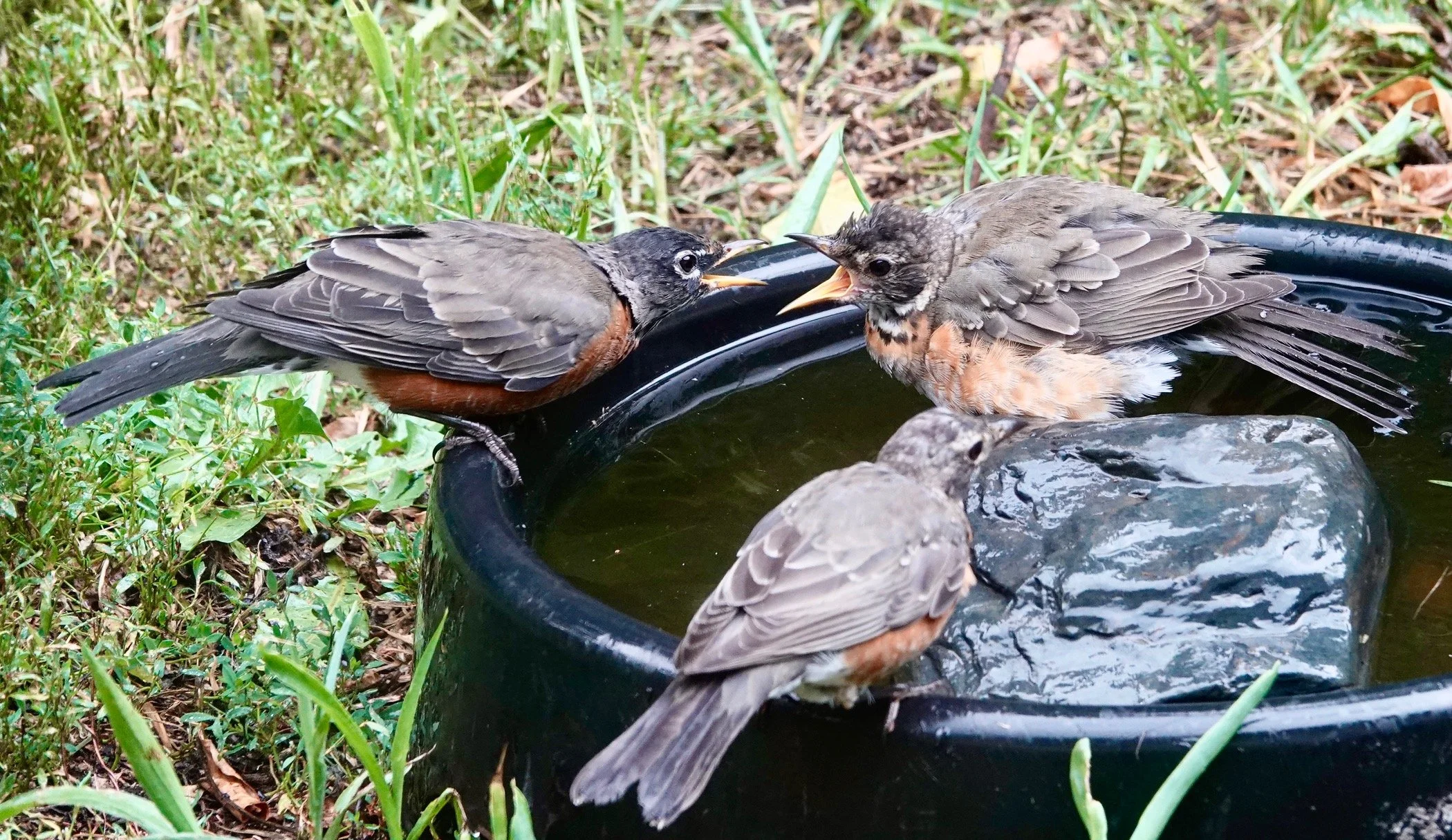Naturally
Great blue lobelia and Jerusalem artichokes! Blooming flowers!
Turkey vultures, appearing unflappable, glided overhead.
There was a flock of robins in my yard and then there wasn’t a single robin. What happened? Was the local grocery store holding a sale on earthworms? At this time of the year, robins congregate and become nomadic. They take a fly-about, searching for their favorite foods, which means certain berries are devoured hungrily.
I filled the feeders for my fine feathered friends. They are certainly worth the price of admission. It is an enjoyable daily chore. The birds take my breath away. I take the feeders in each night to keep them from becoming raccoon feeders. I don’t use any milo. Birds don’t care for it. I had a friend named Milo Madson. He was a great guy. Milo Madson was good; milo in a bird feeder is bad.
I watched a hummingbird buzz around a male cardinal. I suppose the tiny bird was checking to see if the cardinal was a sugar water provider. No matter when I take in the feeders (I like to do that when there is some light remaining so the boogeties don’t get me), a hummingbird circles around where the feeder had been.
The blue jays lifted the peanuts in a shell to find a heavy, meaty one. They’re like me picking up watermelons in an attempt to discover melon perfection. Blue jays are beautiful, but don’t lend them any money.
Chipmunks filled their cheek pouches with fallen seeds under the feeders.
Barred owls called. Flying rat traps.
Deer begin a process of molting in August and September, which is triggered by hormonal changes that reflect the changing seasons. The reddish summer coat turns into a faded gray or brown color as the winter coat grows.
Jewelweed or spotted touch-me-not blooms in late summer, signaling the beginning of hummingbird migration. The stems and leaves of jewelweed have clear sap that’s soothing to minor skin rashes and insect bites. That’s a good thing because jewelweed hangs out in the same places that poison ivy and stinging nettle do. Jewelweed can ease the itch caused by poison ivy and stinging nettles.
William Shakespeare wrote, "One touch of nature makes the whole world kin."
Q&A
“Why do starling flocks perch on utility wires?” Those wires are a part of the modern landscape. Birds naturally incorporate them into their daily lives. Power lines offer convenient places for birds to perch, particularly where no tall trees are around. Starlings use the wires for resting and for flocking.
“Am I seeing a swallow or a swift?” If you notice much color, it’s a swallow. Chimney swifts are dark brown cigars with wings—short bodies with long skinny wings and almost no tails. Swallows have tails. Swifts flap their stiff wings incredibly fast, and swallows bend their wings in a graceful flight. If the bird perches or lands on the ground, it’s a swallow. Swifts fly high when they forage; swallows pursue insects closer to the ground or water.
“Why do birds mob hawks and owls?” It may seem as if fools are rushing in, but it’s a defense mechanism. Songbirds hope predators leave once their cover has been blown. They use alarm calls that attract a mixed species of birds that set aside their differences to confront a common enemy. Adults might demonstrate correct behavior to immature birds or it might be an opportunity for a bird to impress potential mates.
“Where do frogs spend the winter?” Some dig down below the frost line, while other species spend winters brumating (similar to hibernating) on the bottom of lakes, rivers and ponds. They don’t sleep but do become less active. The spring peeper, boreal chorus frog, wood frog and treefrogs crawl under leaf litter and freeze. Glycerol protects their cells from rupturing.
“Do penguins live in both hemispheres?” Penguins live almost exclusively in the Southern Hemisphere: only one species, the Galápagos penguin, is found north of the Equator. The rest live in from Antarctica to the southern coasts of Africa, Australia, New Zealand and South America.
“How can I help native bees?” Around 70% of our native solitary nesting bees use tunnels in the ground to lay their eggs and the other 30% use hollowed-out plant stems or tunnels in dead trees or fallen logs. Leave patches of bare soil in your garden for ground-nesting bees, leave plant stems standing and keep dead trees or fallen logs.
Thanks for stopping by
“Ten times a day something happens to me like this—some strengthening throb of amazement—some good sweet empathic ping and swell. This is the first, the wildest and wisest thing I know: that the soul exists and is built entirely out of attentiveness.” – Mary Oliver.
“The bird feeder is a premium channel.”—Jim Shea.
Do good.
©️Al Batt 2024
There was a long line to the birdbath, rivaling the length of the one to get Peachey’s Baking Company’s Amish Donuts at the Minnesota State Fair. The robins made sounds I assumed meant, “Jump in! Best water ever.” I’ve never seen a robin do a cannonball, but I keep watching. The robins splished and they splashed. They still got their work done. Photo by Al Batt.

